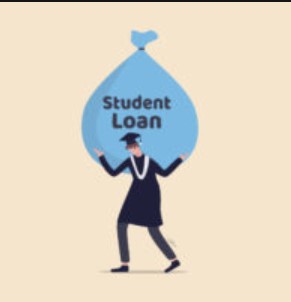

The 411 on Federal Student Loans
After the Payment Pause Ends
Facts and Resources
By Tom Dickson and Kimberly Hedzik
August 2021
The CARES Act gave much needed relief to those with qualifying federal student loans by suspending loan payments, setting interest rates to 0% and placing a temporary halt on collections for all loans in default. This relief is set to expire January 31, 2021. That means, unless there are any additional extensions, come February 2022, the grace period ceases and payments will be due.
So now what?
Whether you are struggling with your student loan payment or not, it is always advisable to reevaluate your student loans on a regular basis. Why? Federal student loans offer a lot of flexibility, to include the option to switch from say a Standard Repayment Plan, where you pay the same monthly payment amount for 120 months, to a different repayment plan that may allow you to reduce your monthly payment.
This post is focused on these “different” types of repayment plans, known as Income-Driven Repayment Plans (IDRs). They give you the ability to reset your payment based on your income. After you read this post, you will better understand the four Income-Driven Repayment Plans available, how to determine if your loan qualifies, how your monthly payment is calculated, what factors to consider before making a change, and the IDR application process.
In addition to the post, I invite you to listen to a replay of a highly rated webinar with student loan expert Heather Jarvis and economist Larry Kotlikoff. During the webinar, Heather will review, in even greater detail, the ideas from this post. Heather has dedicated her career to advocating for sound student loan relief policy and educating student loan borrowers on relief and forgiveness programs. Larry will share examples of that quantify the financial trade-off of switching payments plans and their impact on a borrower's financial plan.
Two Tips before we go further: One, for those already on an Income-Driven Repayment Plan who’ve experienced financial hardship due to job loss or perhaps a growing family, you should immediately contact your loan servicer to request a payment adjustment. You do not have to wait until your annual recertification to make this request.
The second tip is for those who, after reading this post, are still uncertain what to do. If you do nothing else, contact your loan servicer and ask (dare I say demand?) that they present all repayment plan options available to you to include deferment or forbearance for your loan. More on identifying your loan servicer is provided below.
A payment that fits your budget
Imagine having the amount you pay for your student loan based on your income, not a fixed amount that doesn’t consider challenging times like these. That’s exactly what the Income-Driven Repayment Plans (IDRS) can do. They set your payment amount based on your income. There are four primary IDR plans that give borrowers many options depending on their needs, incomes, and family sizes. So, let’s dig into these plans.
What is an income-driven repayment plan?
Income-driven plans are tied to a borrower’s debt-to-income ratio and are based on their needs, discretionary income, and family size. Each of the four different IDR plans has significant, nuanced differences that can save borrowers tens of thousands of dollars. The great news is, for all IDRs, the government forgives any remaining balance, if loans are not fully repaid at the end of the term. That term is either 20 or 25-years’ worth of payments, depending on the specific program. There are tax considerations with forgiveness, however. These forgiveness programs mean it’s not always best to pay as quickly as possible. Whenever feasible, borrowers may opt to consult with a financial advisor familiar with student loan repayment programs to help them compare the multiple repayment scenarios and their tax implications.
Here are a few details to consider when contemplating an IDR plan.
The repayment amount of a loan may be determined by the loan holder’s income and not by how much the payment has to be in order to pay off the debt over a particular period of time.
If a borrower is already enrolled in an Income-Driven Repayment Plan, suspended payments count toward long-term forgiveness. However, the loan forgiveness amount is taxable. Therefore, borrowers should consider paying down the balance during periods of interest waiver.
Interest waiver periods are a double-edged sword. To pay down the principal, borrowers must determine how much unpaid interest has accrued during a waiver period. This interest must be fully repaid before borrowers can reduce or pay down their principal balance.
Because Income-Driven Repayment Plans are intended to help borrowers reduce their monthly payments, the total amount of debt may actually grow under these plans. That’s because payments may not cover the interest as it accrues.
Tip: With any repayment plan, you always want to calculate the total amount you will repay over the life of the loan.
Income-Driven Repayment Plans at a Glance
The U.S. Department of Education offers this succinct comparison of the four most popular Income-Driven Repayment Plans borrowers can enroll in if they have government-backed federal student loans.
What would an Income-Driven Repayment Plan mean to me?
Below are links to two calculators that model possible Income-Driven Repayment Plan scenarios where you can input your specific financial data and view your payments under different plans. VIN is the calculator recommended by student loan expert Heather Jarvis.
Heather’s recommendation: VIN Foundation student loan calculator
Tip: When using the VIN calculator, you can export the “Monthly Report” for each repayment plan in a CSV format. For example, it will calculate your payments under a Standard Repayment Plan, IBR plan and PAYE plan. You can save all of the CSV files into one Excel Workbook (or Google Sheets) and create a master sheet to view your own comparisons.
Another Calculator Tip: There are lots of student loan calculators available from many sources, including websites like NerdWallet, Bankrate and others who will direct you to student loan lenders. Be careful. Lenders are not in the business of saving you money. They are motivated to see you refinance your federal student loans into private loans they finance.This may not be the best option for you.
Finally, another calculator that can help you is the federal student loan simulator. It also offers a look at different repayment strategies, such as lowering your payments, making extra payments, or consolidating your loans.
Last Tip on Calculators: Be careful with your inputs and make sure the interest rate assumptions are correct, especially in the federal loan simulator.
How to determine if your loan qualifies
Visit: www.studentaid.gov and log in with your federal username and password. Go to your account dashboard. Drill down to loan details to see the types. Look for the word “direct.” Federally held loans are called, direct unsubsidized, direct plus, or direct consolidation loans.
Note: Some loans may originate as commercially held loans but become Federally held and therefore qualify if:
The Department of Education owns the loan (it will say ED next to the loan)
The borrower consolidates into the Direct Loan Program
The loan enters default (note: loans in default are not eligible for IDR plans)
How do I apply for an Income Driven Repayment Plan?
To apply for an IDR plan, log in to: www.studentaid.gov. Hover on Manage Loans. Look for Lower my Payments. The first drop down is, Apply for Income-driven Loans. You can see what the application looks like here, but you must log in to officially complete it.
What if I don’t enroll in any of the Income-Driven plans?
If you don’t apply for any of the Income Driven Repayment Plans, your loan servicer will place you on the Standard Repayment Plan.
Income Driven Repayment Plans require borrows to certify their income annually. How do I do that?
To recertify your income, login to: www.studentaid.gov. Hover over Manage Loans. Then look for Lower my Payments. Under that you’ll see, Recertify an Income driven Repayment Plan. Scroll down to, Returning IDR Applicants.
Who is my loan servicer?
To find out who services your loan, log into studentaid.gov. Click on the dashboard under your name. Information about you loan servicer will be there. Or call the Federal Student Aid Information Center (FSAIC) at 1-800-433-3243. If you have a Federal Perkins Loan not owned by Department of Education, contact the college or university where you received your loan. If you are unsure who services your loan, look for the contact information on the most recent communication you received from them.
Are Parent Plus Loans eligible for Income Repayment Plans?
Parent PLUS loans are only eligible for the income contingent repayment plan, not the better, cheaper income driven plans. And even then, they must be consolidated before the income contingency plan is available.
What if I’m in danger of missing a loan payment?
Contact your loan servicer immediately if you are in a financial bind and may have difficulty making your student loan payments. You may qualify for deferment or forbearance.
Note: If you have already defaulted on any federal student loans, contact the organization that notified you of the default. Explain your situation and work with them to re-establish a payment schedule. Loan rehabilitation or consolidation may be viable options. Note that student loans are rarely discharged in bankruptcy.
What about Public Service Occupations as a way to reduce Student Loan repayment?
If the borrower works full-time in the public service sector, they are eligible for the Public Service Loan Forgiveness program. Once the borrower makes 120 qualifying monthly payments, the remaining loan balance is canceled. And no tax is assessed on the unpaid balance. Public service jobs not only include government positions but also working for advocacy organizations, 501(c)(3) non-profits, and universities. For those working toward public service loan forgiveness, suspended payments count toward the 120-payment forgiveness goal. Visit www.studentaid.gov to use their online PSLF help tool to search for qualifying employers.
Should I consolidate my loan?
A Direct Consolidation Loan, one that combines multiple student loans into one, has no application fee and may even be required before you can apply for an income-driven loan. It may help simplify your monthly payments, lower your payments, give you access to additional income-driven repayment plan options, and public service loan forgiveness options. But it may also stretch out your payments over time, increasing your interest payments. Also, you will lose credit toward any Public Service Loan Forgiveness payments you’ve already made, assuming you were enrolled in the PSLF program before consolidation.
Should I refinance my loan?
The main reason to refinance is to reduce your monthly payment by reducing the interest rate on your loan. But it’s also important to consider what the repayment term is, i.e., how long will you be making payments. The longer someone wants or needs to repay the loan, the higher interest rates they're going to be offered on the private market. Therefore, if the borrower can pay off their loan with a short term, it may be an advantage to refinance.
Caution: If you refinance a federal loan with a private lender or bank you will be relinquishing the protections afforded to you with a federal loan, such as income-based repayment plans.
Additional Resources
Last but certainly not least. The National Consumer Law Center is a resource to help families who are struggling with repayment. They are borrower advocates. http://www.studentloanborrowerassistance.org/
Look for more:
We intend to host more webinars on student loans and provide resources to help educate student loan borrowers on the options available to them. Make sure to bookmark our website, www.financialexpertsnetwork.com, for news of upcoming webinars and posts.

